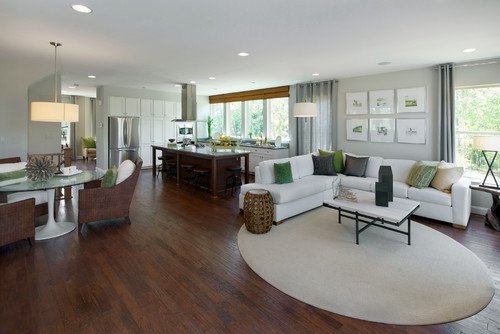For decades, senior living facilities have used outdated standards with buildings that are often depressing to live and work in and not up to regulations. These structures are unfit for elderly individuals who have disabilities, and they can lead to cognitive decline from depression.
Yet, many of today’s innovative senior living homes use universal design principles to encourage independent environments with safe, comfortable rooms. Those investing in senior living facilities are encouraged by the commercial architects they work with to review the factors that make successful overall structures, as discussed in this article by ZP Architects.
In general, universal design principles cover the gamut of activity levels, age, and type of care offered. In this blog, we’ll share the way new and existing facilities can use these principles to make their senior living environments more accessible to all.
1. Understanding Universal Design
Universal design refers to the idea that every product, building, environment, and technology should consider a vast range of people using it. This term, initially shared by an architect named Ronald L. Mace, embraces the concept that everyone is important. No matter your abilities or disabilities, gender, age, or status, you should be able to use and enjoy your surroundings.
Mace designed some of the world’s first universally-accessible buildings and products, and then aided the country in developing the first accessible building codes in America.
Using his foundation, architects and construction engineers assist clients in designing structures with a focus on the broadest range of users as possible.
2. Applying These Principles of Design for Successful Senior Living
“All people” includes seniors, even those who are placed in senior living homes and forgotten by their loved ones. Yet, more and more relatives of elderly people are expressing concern about the care their family members receive in a senior living home.
Those living in long-term care facilities and their representatives are actively seeking care planning in systematic ways, including finding establishments that are built to include their loved one’s needs.
How can designers of senior living homes incorporate these universal principles into their structures? Existing facilities can take the design ideas and evaluate their current space to see where there are gaps, then adjust to fill those missing pieces.
These gaps may be simple, such as adding grab bars over the toilet or bathtub, shifting to easy-access drawers, or increasing the lighting in a room. However, they could be more complex, requiring new construction to establish wider doorways, shift to stepless entryways, or install counters that can be adjusted for varied heights.
Renovating an existing structure to make it ideal for all seniors living there can be time-consuming and expensive. However, when universal design is incorporated in the plans from the beginning, the design elements become timeless ways to improve the quality of life for everyone who will be living in the home in the future. Because safety and comfort are the goals, family members feel more confident leaving their loved ones in a senior living home constructed with universal design features.
3. Choosing the Right Universal Designs For the Type of Care Offered
When you choose to focus on universal design principles to drive your senior living plans, you’ll need to consider both inside and outside, as well as who will be living there.
Since a senior home includes people in various stages of health, including those who are active and those who are bedridden, this becomes complex. Working with an architect specializing in universal design structures can help you ensure you’re encompassing your future residents’ mental and physical well-being.
To be successful in the long term, design principles must include features that will grow with each person’s health as they age. The home must be accessible to all and remain so over the next decades.
Your commercial architect and experts, such as physical and occupational therapists, can guide you as you create your facility’s plan. Reviewing tests such as facility safety assessments and functional needs assessments can be an excellent way to understand what many seniors experience as they age. This action will help you decide which modifications and accommodations to include.
Conclusion
Every human deserves to live in an environment where they feel safe and comfortable. For seniors who begin to slowly lose their independence, the facilities they move to must encompass these traits. Using universal design principles in your plan, whether you’re remodeling or building from the ground up, ensures you consider the needs of all.
With this idea in mind as you plan your structure, you are more likely to build an inclusive senior living home ideal for a diverse range of people. Your residents and their family members will be satisfied with the new environment, aiding in cultivating a positive reputation for your business and healthy interactions for each person within your care.




